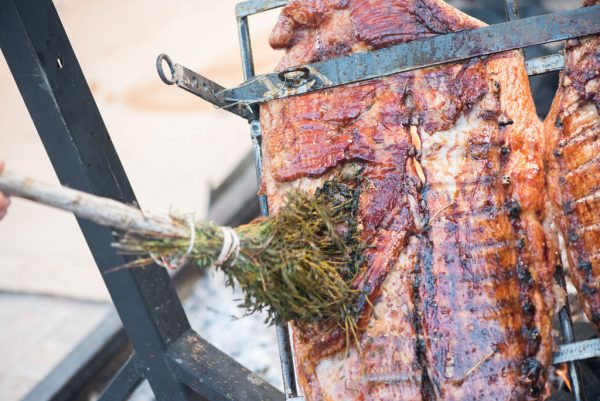Saturday, July 27th, 2019.
In this Daily: A Guanacaste Barbecue and Why Slow Cooking Meat Creates Layered Flavors
Today marks the last day of Limonada’s Guanacaste Day celebrations, and things are winding down with a classic Costa Rican barbecue on the beach in front of Limonada, with slow-roasted pork gallos (tico version of tacos) as well as other Guanacaste inspired favorites for sides.
Chef Gilberto Briceño will be overseeing things as head chef to wrap up this three meal celebration of Guanacaste’s culture, and slow roasted pork is one of his favorites to go back to. The phrase “slow-cooked” is thrown around so often that it can start to lose its meaning, but with the help of Chef Briceño we’re taking a look at why to slow cook meat and how it can be valuable for the flavor of a dish.
Why to Slow Cook Meat for a Dish | The Benefits of Patience and Slow Cooking Meat
As Chef Briceño tells it, there are many reasons for slow cooking meat, but these values are particularly prevalent when cooking a large piece of meat, as is being done with the pork roast this afternoon.
The first is entirely practical. When cooking a large piece of meat, too-high temperatures burn the outside of the piece without ever reaching the inside, leading to an uneven and unsafe preparation. Lower temperatures take longer, but slowly and evenly permeate the piece, resulting in a gentle cooking through and through.
This longer preparation time also allows for a deeper mixing of flavors that isn’t possible with a shorter cook cycle. In a large piece of pork, there’s a natural diversity of flavors that come from different cuts, fat densities, and chemical compositions. Slow cooking allows these flavors to diffuse throughout the cut, blending and mixing for a deeper, more layered taste. Other flavorings, like a subtle baste applied consistently, or vegetables and herbs, or even the flavors of specific flames and smoke like charcoal or specific woods are able to seep into the cut over time.
In essence, slow cooking is a practice in subtlety. In a flash prepared cut, you can often end up with one or two overpowering flavors, but given time to simmer and blend, the gentler flavors express themselves and create a deep, layered taste can ultimately be far more satisfying.
Something to keep in mind as you enjoy Chef Briceño’s slow roasted pork with tortillas for lunch today.
